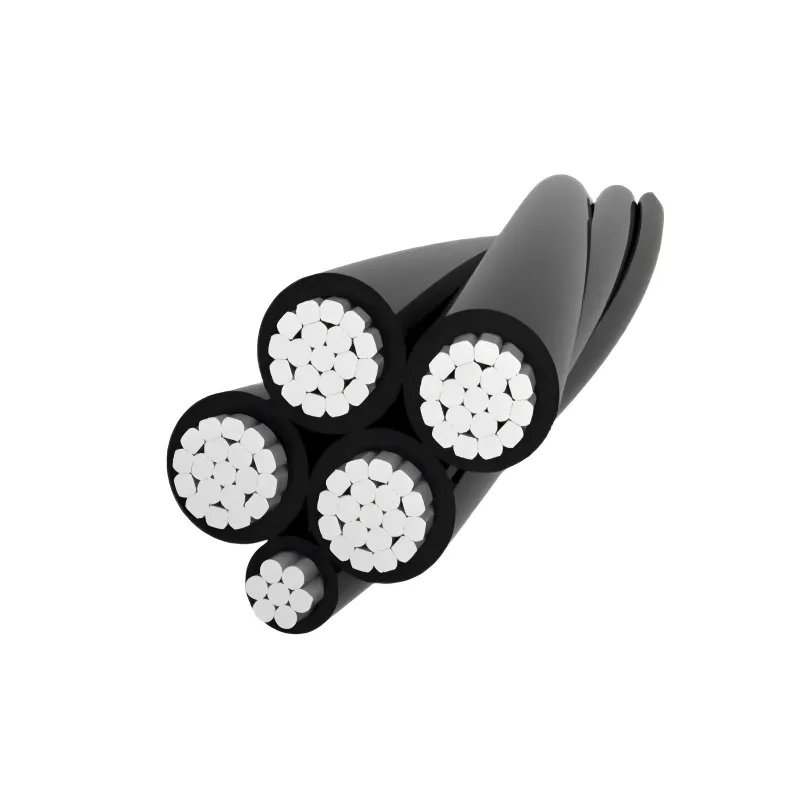Time: 2025-04-24 15:18:23 Source: Henan Province Jianyun Cable Co., Ltd.

HT (High Tension) and LT (Low Tension) overhead lines are electrical transmission and distribution lines that use aerial conductors supported by poles or towers to deliver electricity. “High Tension” and “Low Tension” refer to the voltage levels they operate at, reflecting their role in the power distribution network.
HT Overhead Lines: These lines carry high voltage electricity, typically used for transmission over long distances or distribution between substations. They’re part of the backbone of the power grid, stepping down voltage for further distribution.
LT Overhead Lines: These lines carry low voltage electricity, typically used for the final distribution to consumers, such as homes or small businesses. They deliver power directly to end users after voltage is stepped down from HT lines.
HT and LT overhead lines are like “highways” and “local roads” in a power network—HT lines are the highways moving large amounts of electricity over long distances, while LT lines are the local roads delivering it to your doorstep.
Voltage levels for HT and LT lines vary by region and standards but generally follow these classifications:
For example, an 11kV HT line might distribute power to a local substation, where it’s stepped down to 400V for an LT line to deliver to homes. The voltage difference determines their design and safety requirements. HT and LT lines are like “big pipes” and “small pipes” in a water system—HT handles the high-pressure flow, LT the low-pressure delivery.
HT and LT overhead lines are designed differently to handle their respective voltage levels, distances, and safety needs:
The design ensures safety and efficiency—HT lines prioritize voltage isolation, while LT lines focus on accessibility for end users. Designing HT and LT lines is like building “bridges” for electricity—the higher the voltage, the stronger and taller the bridge needs to be.
The conductors in HT and LT overhead lines are chosen based on voltage, current, and environmental factors. Below is a table comparing their conductor types:
| Aspect | HT Overhead Line | LT Overhead Line |
|---|---|---|
| Conductor Type | ACSR, AAC, AAAC | ABC, ACSR (smaller), Insulated Copper |
| Material | Aluminum with steel core | Aluminum or copper, often insulated |
| Size | Larger (e.g., 240 mm²) | Smaller (e.g., 16 mm²–50 mm²) |
| Insulation | Uninsulated (air-insulated) | Often insulated (e.g., XLPE) |
HT Conductors: Typically use ACSR (Aluminum Conductor Steel Reinforced, as discussed earlier), AAC (All Aluminum Conductor), or AAAC (All Aluminum Alloy Conductor) for their strength, conductivity, and light weight. These are uninsulated, relying on air and insulators for safety.
LT Conductors: Often use aerial bundled cables (ABC, as discussed) with XLPE insulation to prevent contact faults, especially in urban areas. Smaller ACSR or insulated copper conductors (e.g., 16 mm²) are used for shorter spans and lower currents.
Conductors are like the “lanes” of HT and LT lines—HT needs wider, stronger lanes for heavy traffic, while LT uses smaller, safer lanes for local delivery.
HT and LT overhead lines serve distinct roles in power distribution:
For example, an 11kV HT line might bring power to a village substation, where it’s stepped down to 400V for LT lines to deliver to homes. HT and LT lines are like “supply chains” for electricity—HT handles bulk transport, LT manages the last-mile delivery.
HT and LT overhead lines must comply with international and local standards for safety and performance:
Local standards, such as Saudi Arabia’s SASO or Russia’s GOST R, may also require additional safety measures, like UV resistance for HT lines in harsh climates. Standards are like a “blueprint” for HT and LT lines—ensuring they’re built to handle their respective loads safely.
Both HT and LT overhead lines face environmental, technical, and safety challenges:
These challenges are like “roadblocks” on the power delivery route—HT and LT lines must be designed and maintained to overcome them for reliable service.
HT and LT overhead lines are adapting to modern demands and technologies:
The evolution of HT and LT lines is like upgrading a “transport network”—from basic roads to smart highways, they’re becoming more efficient and resilient.
HT (High Tension) overhead lines operate at high voltages (e.g., 11kV–400kV) for transmission and distribution over long distances, using uninsulated conductors like ACSR on tall towers. LT (Low Tension) overhead lines operate at low voltages (e.g., 230V–400V) for final distribution to homes and businesses, often using insulated ABC on shorter poles. They differ in design, conductor types, applications, and challenges, governed by standards like IEC 60888 and IEC 60502. Both face environmental challenges but are evolving with smart grids, renewable integration, and advanced materials, ensuring reliable power delivery in modern electrical systems.